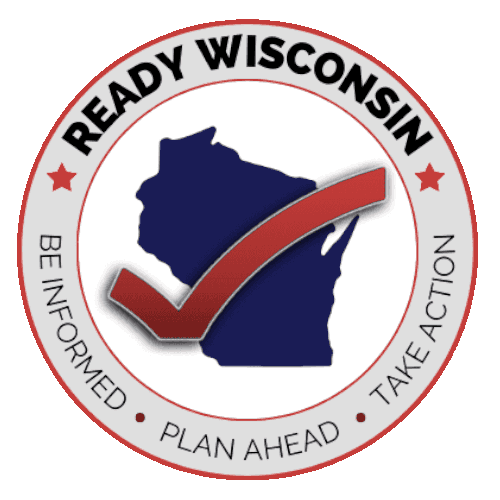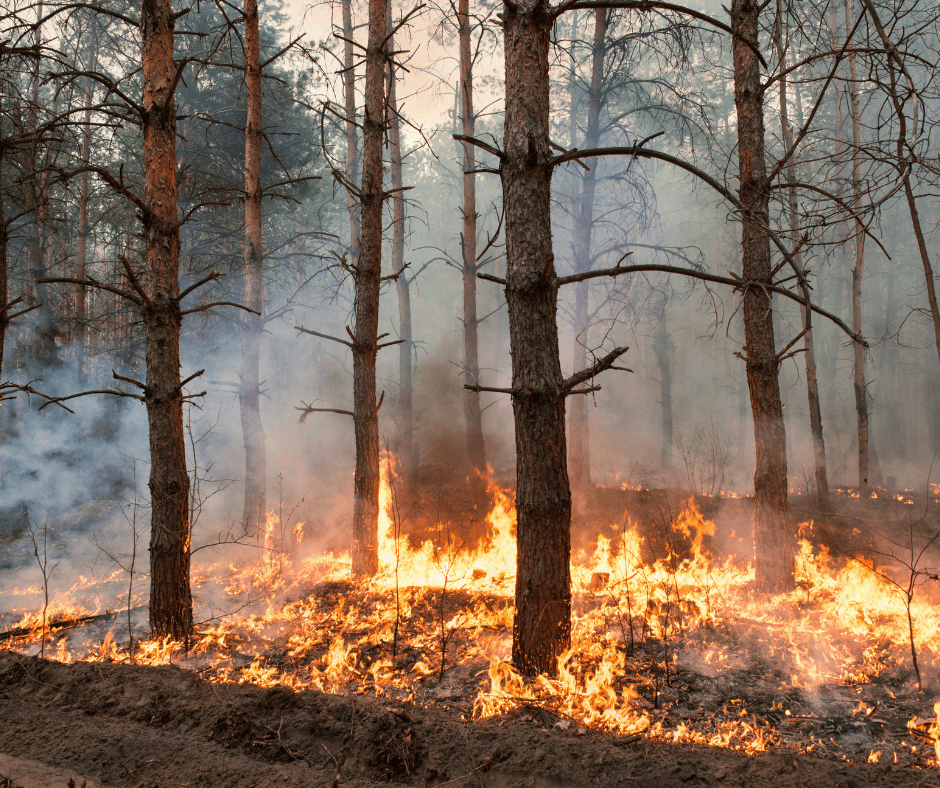When conditions are dry, wildfires can threaten woodland, prairies, and natural areas. These fires have the potential to spread quickly. Wildfires can affect wildlife and natural areas, along with communities.
According to the U.S. Department of the Interior, almost 90-percent of wildfires in the United States are caused by people. Human-caused fires can result from unattended campfires, burning debris, downed powerlines, negligently discarding cigarettes, and intentional acts of arson. The remaining 10-percent of wildfires are started by lightning or lava.
Most wildfires in Wisconsin occur in the spring. Shortly after snow disappears, a dry spring or even a few days between rains can leave grasses, pine needles, and leaf litter very dry, creating hazardous conditions. In Wisconsin summer months, wildfires do not spread as quickly due to green vegetation and elevated humidity. However, long-term seasonal drought due to lack of rain can result in dry condition that result in a spike of occurrences.
If you see a wildfire or one has been spotted in your area, take steps quickly to get out of its path and to protect your property from its approach. There are several steps you can take to help firefighters working in your area. If you are in danger, get out of the area quickly and wait until emergency responders say it is safe to return home.
Protecting Yourself…
…Before a Wildfire
- Know your wildfire risk. Learn about the history of wildfires in your area. Be aware of recent weather and keep an eye on the Wisconsin Department of Natural Resources burning restrictions and wildfire activity map: https://dnr.wisconsin.gov/topic/ForestFire
- Have an emergency plan. Make sure everyone in your household knows what to do if you need to evacuate.
- Review important documents. Make sure your insurance policies and personal documents, such as an ID card, are up to date.
- Strengthen your home.
- Use fire resistant materials to build, renovate, or make repairs.
- Create a fire-resistant zone that is free of leaves, debris, or flammable materials for at least 30 feet from your home.
- Find an outdoor water source with a hose that can reach any area of your property.
- Designate a room that can be closed off from outside air. Close all doors and windows. Set up a portable air cleaner when smokey conditions exist.
- Have an emergency kit. Have enough supplies for your household, including pets, in your go bag or vehicle.
- Keep your cell phone charged.
…During a Wildfire
- Pay attention to alerts and notifications. Officials will provide information and instructions.
- Evacuate if told to do so. Consider making plans with friends or family to shelter with them in a location that may be safer and more comfortable. Check with local authorities on public shelter information. If you are not told to evacuate, but smoky conditions exist, stay inside in a safe location or a community building where smoke levels are lower.
- If trapped, call 911. Give your location, but be aware that an emergency response could be delayed or impossible. Turn on lights to help rescuers find you.
- Use a mask or face covering. An N95 mask or cloth face covering can help protect you from smoke inhalation or limit your exposure to smoke.
…After a Wildfire
Before attempting to return to your home, check with fire officials. Use caution when re-entering a burned area because flare-ups can occur.
- Check the ground for hot spots, smoldering stumps, and vegetation.
- Check the roof and exterior areas for sparks and embers.
- Check the attic and throughout the house for hidden burning.
- Continue to check for problem areas for several days.
- Follow public health rules and wear safety equipment.
- Avoid direct contact with ash. Wash off ash that gets on your skin or in your eyes or mouth as soon as you can.
- Throw out food exposed to heat, smoke, fumes, or chemicals.
- Avoid downed power lines and telephone poles.

